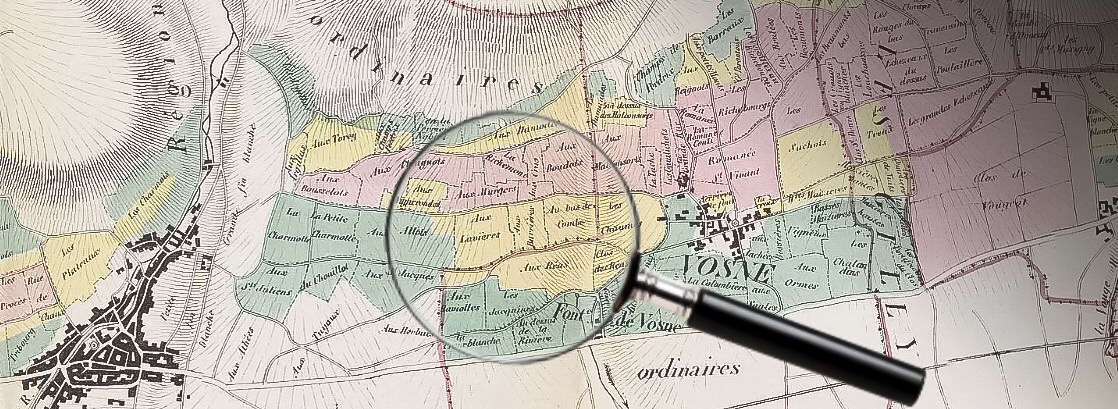There are a lot of interesting terroirs in the Vosne-Romanee appellation itself and in the twillight zone between Nuits-Saint-Georges and Vosne-Romanee.
This area is somewhat overlooked, but as the new generations of vignerons take on these terroirs, there are very fine wines to find from these vineyards.
The twillight zone … around the border between Vosne and NSG
Nuits-Saint-Georges is stylewise divided in three sections – Premeaux in the south, the main and classic Nuits-Saint-Georges in the middle, and the Vosne section located between Vosne-Romanee and the city of Nuits-Saint-Georges.
The border between Nuits-Saint-Georges and Premeaux is well defined as Premeaux was a separate appellation in the old literature, and still is in the current cadastre system.
The border between classic Nuits-Saint-Georges and the Vosne styled Nuits-Saint-Georges is however not well defined. Some say that the Vosne end is covering all of the vineyards located north of the city of Nuits-Saint-Georges – whereas I think that the vineyards just north of the city of Nuits-Saint-Georges are showing more signs of classic Nuits-Saint-Georges – i.e. a bit darker fruit and slightly more austerity is introduced in the wines – but that’s just a personal view.
This is of course also influenced by the producers, as a Vosne producers often will impose more “Vosne style” on the wines, whereas a Nuits-Saint-Georges producer will influence the outcome in a NSG way.
I will not try to define this border between the Vosne part of NSG and the classic Nuits-Saint-Georges in this article, but will focus on what I would like to call the twilight zone .. where Vosne-Romanee meets Nuits-Saint-Georges.
I will start out at village level, and move up the hill …
Top village vineyards according to the 1861 classification
The 1861 classification made by Comité d’Agriculture2 is most likely the most detailed classification ever made for Burgundy. It’s also more or less the foundation for the current official classification of the Burgundian vineyards – that was established in and around 1936.
You need to login as a Premium Subscriber to read the rest of this article. If you are not a subscriber, use the subscribe function and sign-up.


 - A true vin d’émotion – a Burgundy of passion
- A true vin d’émotion – a Burgundy of passion - A truly hedonistic wine – lively and enjoyable
- A truly hedonistic wine – lively and enjoyable - A vivacious wine for pure indulgance
- A vivacious wine for pure indulgance - A Vin Vif - fresh, energetic and with a light appearance
- A Vin Vif - fresh, energetic and with a light appearance